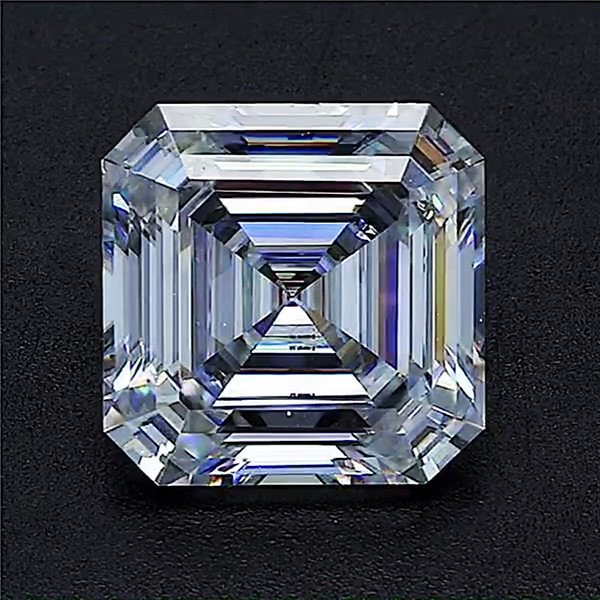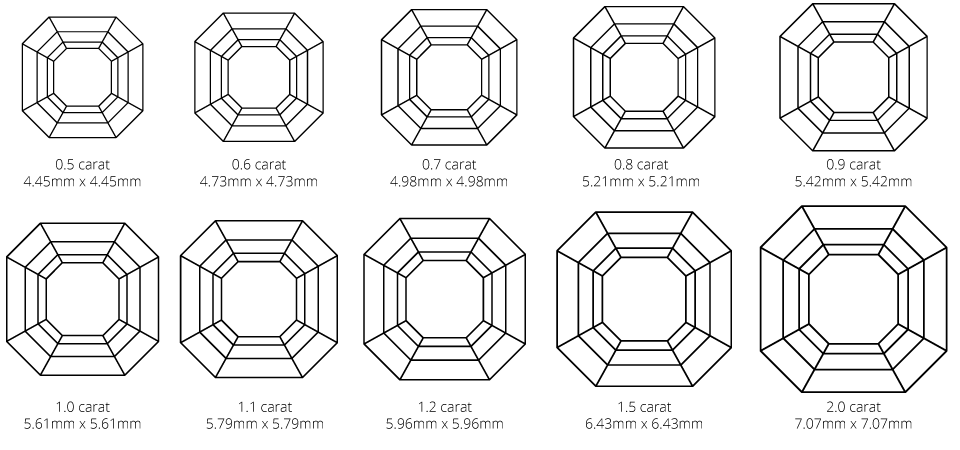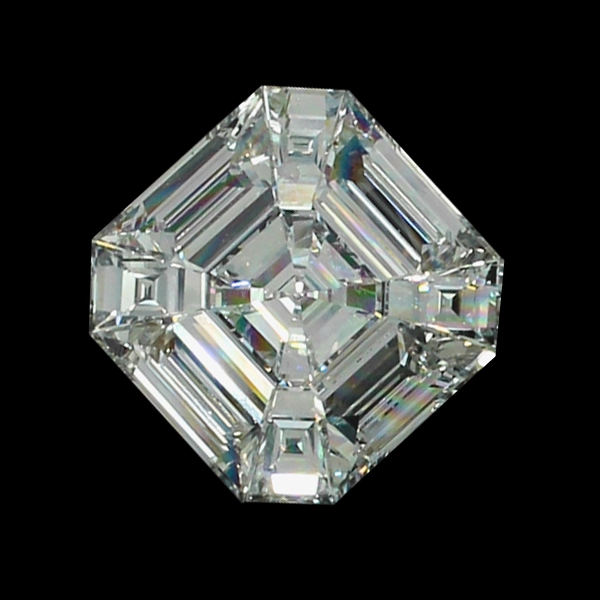Asscher Cut Diamond
Asscher Cut Diamond

Key Takeaways:
- Asscher diamond are elegant and graceful; they are step cut with open facets, unlike the brilliant cut.
- Given the open facets, we recommend that you buy a high clarity grade Asscher cut.
- In terms of color, D-F colors are considered colorless, G is also a great color. Moreover, H and I color are great budget options if you do not wish to compromise on quality.
- A length-to-width ratio of 1 to 1.05 is ideal.
- While evaluating the cut, a depth of 60% to 68% and a table of 61% to 71% is recommended with a tolerance of 1-2% (up or down).
- Avoid fluorescence in the D-G color range; up to medium blue is great in H and I color.
- Buy a GIA or AGS graded loose diamond.


Asscher Cut Overview:
Asscher cut diamond was once considered a revolutionary concept when it was created and named after the Royal Asscher Diamond Company. However, it was not as popular in the 19th century as it is today. Around 2002, Asscher cut diamonds began to make a reappearance, partly because the cut modifications provided the shape more brilliance than the traditional Asscher cut. Asscher cut diamonds radiate superb shine when you compare their facets to an ostensibly incessant hallway lined with reflective mirrors.
The modern Asscher cut diamond shares similar features to a square emerald cut. Both have a smaller table, higher crown, and larger step facets. With proper positioning of the pavilion facets, you will notice that the Asscher cut diamond has nice concentric squares. These qualities often produce more brilliance in Asscher cut diamonds. The square shape of the Asscher cut, combined with the cropped corners, gives it a unique octagonal shape. The diamond will maintain its shape within a square silhouette if placed in a four-prong setting.
Analyzing Asscher Cut:
Below is a comprehensive summary of how to assess the cut of an Asscher cut diamond.
|
Depth %
|
Table %
|
Culet
|
Girdle
|
|
Length to Width Ratio
|
The chart above serves as a general guideline when evaluating the cut of an Asscher cut diamond. The length to width ratio of 1.00 is considered the classic cut for a square shape in Asscher cut. However, slightly rectangular shapes do exist in Asscher cut diamonds, and a ratio of 1.05 or less will appear square to the naked eye. For that reason, every SGDX diamond includes length to width ratio to enable our customers to make a rational decision when considering an Asscher cut diamond.
The chart above serves as a general guideline when evaluating the cut of an Asscher cut diamond. The length to width ratio of 1.00 is considered the classic cut for a square shape in Asscher cut. However, slightly rectangular shapes do exist in Asscher cut diamonds, and a ratio of 1.05 or less will appear square to the naked eye.
Evaluating Asscher Color:
Color is a crucial factor in Asscher cut diamonds. You can prioritize every C of the 4Cs, but you must give importance to clarity and color.
Similar to evaluating the color in other diamond shapes, color in an Asscher cut diamond is also subjective. Our experience indicates that many buyers prefer the warmer colors over the cooler ones due to the affordability factor. In the color spectrum, the former (warmer colors) refer to G-I diamonds whereas the latter (cooler colors) refer to D-F diamonds. The good side to it is that the price premium for H and I color grade Asscher cut diamond would be lower.
For more detailed information on the color of an Asscher cut diamond, use the table below.
|
< 0.50 Carat
|
0.51 – 1.0 Carat
|
|
1.0 – 2.0 Carat
|
>2.0 Carat
|
|
Flouro
|
Choosing Asscher Clarity:
Since Asscher cut diamonds have open facets, we recommend buying a slightly higher clarity Asscher cut diamond. Each of our customers has a unique standard for clarity and color. Some want a flawless diamond, while others are perfectly comfortable with inclusions if they are not noticeable to the naked eye. The GIA provides excellent help with their clarity grades. You can use it to choose an Asscher cut diamond that could meet your expectations.
SI1 would have a great balance of price and appearance in an Asscher cut. You can also consider buying VS2 for a comparable choice.
|
< 0.50 Carat
|
0.51 – 1.0 Carat
|
|
1.0 – 2.0 Carat
|
>2.0 Carat
|



Suggested carat weight, cut, color and clarity of Asscher Cut Diamond for people with budget constraints
Below are summarized general guidelines for how to navigate the 4Cs within a tight budget. For more information, read this article on how to prioritize the 4Cs.
Excellent Choice
- At least 1.0 carats in Weight
- Very Good to Excellent Polish and Symmetry
- G or above in color
- SI1 or above in clarity
- No Fluorescence
- Length/width ratios: 1-1.04
Very Good Choice
- At least 0.90 carats in Weight
- Good to Excellent Polish and Symmetry
- H or above in Color
- SI1 or above in Clarity
- None, faint or medium blue fluorescence
- Length/width ratios: 1-1.04
Good Choice
- At least 0.80 Carats in Weight
- Good to Very Good Polish and Symmetry
- I or above in Color
- SI1 or above in Clarity
- None, faint or medium blue fluorescence
- Length/width ratios: 1-1.04
Credit: Sharif Khan on 9th Jan 2021
